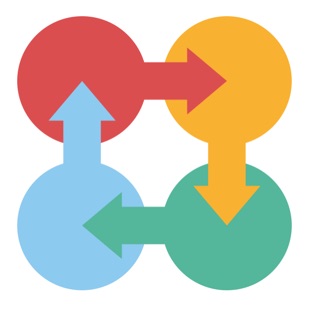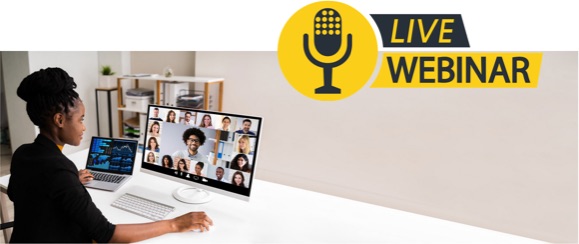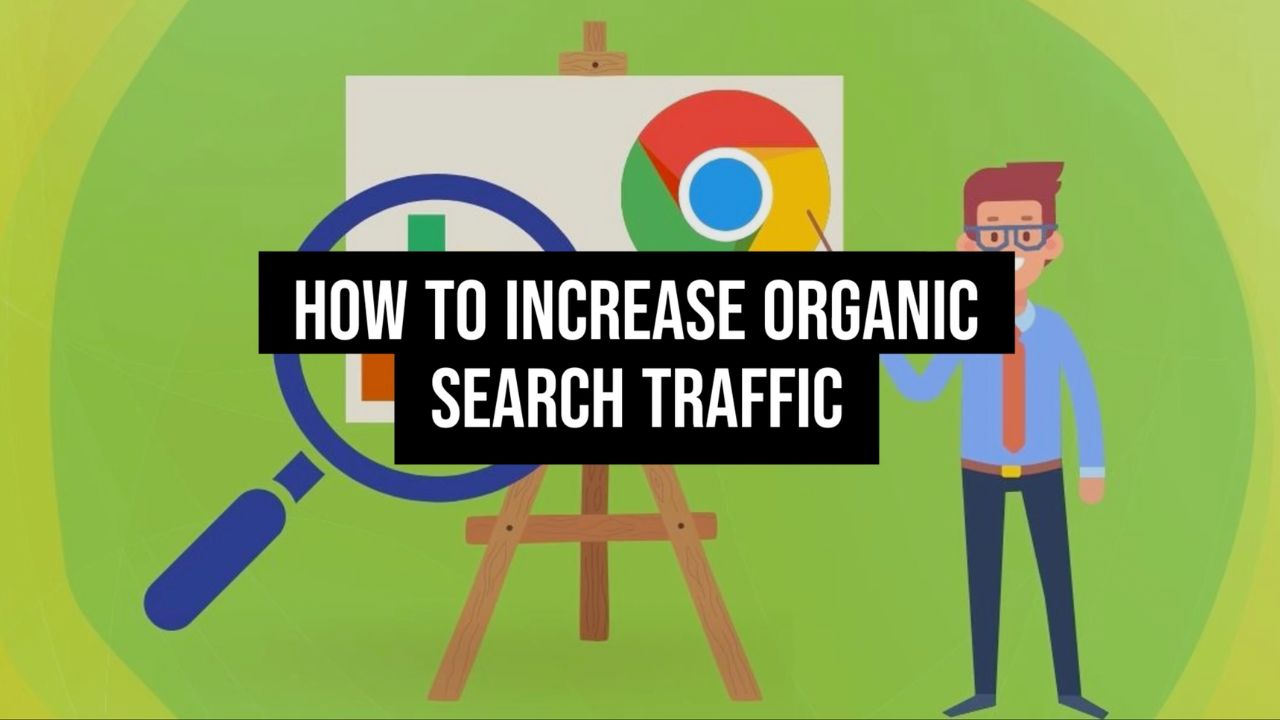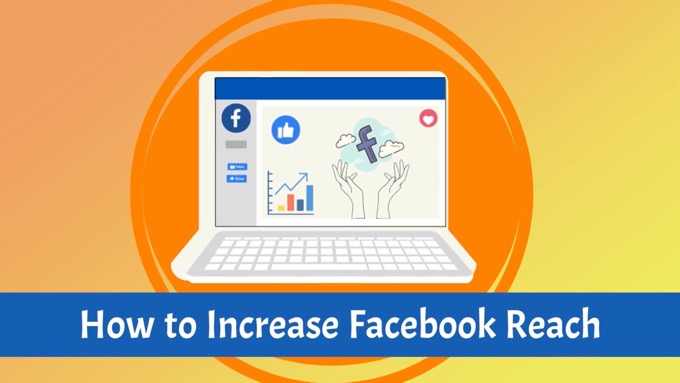Developing an effective webinar you can use for marketing is a powerful asset.
It's one of the most effective ways to convert cold traffic into sales revenue.
This post gives you everything you need to know for creating and presenting an effective webinar, even if you’ve never done it before, including:
- Creating your offer
- Building all the marketing you need around the webinar so it delivers results
- And crucially... managing your expectations...
Creating an Effective Webinar
1. Decide on Your Topic
What’s one of the most important components for a successful webinar?
The topic you cover.
In other words, what will your webinar be about?
If it’s of little appeal to those you hope to attract, it’s going to be hard to make it work.
On the other hand, if your webinar helps people address a common pain point, it’s going to be easier to attract people and get them to engage with it.
But they do need to be the right kind of people, those likely to want to buy whatever it is you’re selling.
What's one of the most important components for a successful webinar? The topic! Your webinar should help your target market solve a common problem.Click To Post OnSo how do you come up with a suitable topic?
Easy.
It’s largely dictated by the product or service you sell.
After all, what you sell is probably already helping your target market solve a common pain point, whether or not they’re consciously aware of it.
Your webinar serves to:
- Make your audience aware of that pain by bringing it to the forefront of their attention so they really feel how it’s currently impacting or limiting their lives
- Generating their interest in your solution for it
- Turning that into a desire to get your solution
- Get them to take action by buying it.
In brief, the AIDA principle—Attention, Interest, Desire, Action.

So how should your webinar be structured? Let’s find out…
2. Create an Effective Presentation Structure
Most successful sales webinars are structured in a similar way.
That’s because it works, and is in fact little different to a successful sales presentation from the stage.
First, Show Them What To Do…
The aim of this first section of your webinar is to make your audience:
- Fully aware of their pain, and what they need to do—at least, in theory—to solve it…
- Hungry to know exactly how to put what you’ve shown them into practice.
This section is likely to take up the majority of the webinar presentation.
... Then Show Them How To Do It
The second section is where you get into the practicalities.
But rather than diving into the details, you’re essentially telling your audience how to get what they need to put everything into practice.
So you might be selling a course that teaches them the ‘how’...
Or a coaching program that does the same…
Or a software program that makes the process you’ve shown them accessible and easy…
Or a service that takes care of it for them…
You get the idea!
As a basic example, let’s take a swimming pool service company that has created a webinar to help pool owners look after their pool.

Such a webinar might first show what attendees need to do to service and maintain their pool…
And then transition into showing them how to get all of that taken care of for them without all the time, effort and hassle that would otherwise be required, and with the peace of mind that comes from knowing it’s taken care of for them by experts.
In other words, their offer gives attendees the opportunity to purchase their service.
Whether or not your webinar translates into sales and new revenue for your business depends on the effectiveness of your offer.
Here’s how to create one…
3. Create Your Offer
Before you start creating the webinar itself, think about the offer you want to present to attendees.
This impacts the main content of your webinar, because your content needs to ultimately lead into, and mentally prepare your audience to want to take advantage of, your offer.
First determine:
- What exactly you’ll be selling on the webinar…
- The deal you will have available for attendees—generally this needs to be one that isn’t otherwise available, that attendees can only take advantage of through the webinar.
For best results, aim to incorporate the following three elements into your offer if at all possible—each can have a significant impact on the results you would otherwise achieve:
- Scarcity—for example, a limited number of slots available for a training program, or a bonus that’s only available for the first X number of customers.
- Urgency—why should attendees act now? This is commonly a strict time limit on the offer, after which it will be withdrawn. A deal that expires within 3 days or so of the webinar tends to work well, because it gives enough time for effective follow-up (more on that below) without being so far out that people procrastinate and lose interest.
- Guarantee—how can you make prospective customers feel reassured and feel like they can’t lose? How can you reverse their risk?
And keep your offer simple and easy to understand. Countless sales are lost by simply confusing the audience.
For maximum sales conversions from your webinar, keep the offer simple and easy to understand. Countless sales are lost by simply confusing the audience.Click To Post On4. Create Your Webinar
So you know your topic, what the offer is going to look like, and have a broad idea about how your webinar as a whole should be structured…
It’s time to start creating the webinar presentation itself!
How long should it be?
Webinars vary in length tremendously, but as a general guide, aim for around sixty to ninety minutes long.
The first two thirds or so should be focused on What To Do, with the last third focused on How To Do It and incorporating your offer.
Most webinar presentations are based on a Powerpoint-style slideshow. With a 60- to 90-minutes webinar, and 2-3 minutes spent talking about each slide, you’re likely going to need to create 30-40 slides in total.
If you’ve never created a webinar presentation before, that can sound intimidating.
So here’s a powerful way to approach it that makes it a whole lot easier…
Break down your topic into around 7 key points that you want to get across to your audience.
However tempted you might be, don’t try to teach everything you possibly can on your chosen topic.
You’ll overwhelm attendees to the extent that they’ll simply switch off and disappear. Keep it simple!
To create an effective webinar, aim to provide value to your audience in an engaging way so they get to know, like and trust you.Click To Post OnOnce you’ve got your 7 key points, break down those into a dozen or so bullet points you want to cover for each.
These then translate into 3 to 4 slides for each of your key points, with each slide containing 3 to 4 bullet points.
By the time you’ve done that, you’ve got most of the content for your webinar, and just need to flesh it out with the actual slides and some idea of what you’ll talk about on each of the bullet points.
The most important factor to bear in mind when creating your webinar is this…
Provide value to your audience in an engaging way so that they get to ‘know, like and trust you’ … and stick around long enough to see your offer at the end.

So each slide should lead onto the next, holding their attention for as long as possible.
Once you’ve got your What To Do slides sketched out, tackle the How To Do It section in a similar way.
Aim to transition into your ‘how’ information in a natural way that in turn leads straight into your offer.
The end result should be that people attending your webinar feel that taking advantage of your offer is simply the best choice available in order to put what you’ve been teaching them into action and thereby solve the ‘‘problem’ or pain point your webinar addresses.
5. Create Your Marketing Machine
Hate to say it, but with your webinar presentation done, you’re only halfway there!
In fact, the presentation itself is just one part of a bigger marketing machine that makes your webinar as a whole successful and effective, including:
- Attracting registrants in the first place…
- Getting them to turn up or watch the replay…
- Getting them to take action, and in so doing transforming registrants into customers.
By itself, a webinar presentation does little or nothing.
So what else do you need?
The basic elements for an effective marketing machine for a sales webinar are:
- A way for people to register for the webinar, capturing their details so you can follow up with them.
- A pre-webinar email series sent to registrants and reminding them about the event. At minimum, this should include an initial confirmation email, an email sent an hour or so before the webinar starts, and then a We’re live! type email. To increase results, these can be supplemented with SMS messages.
- A post-webinar email series sent to registrants leading up to the deadline for your offer, usually three days or so after the webinar. So you might have the initial email sent on day one, a second on day two, and three emails spaced a few hours apart on day three as the deadline approaches, increasing the sense of urgency for your offer. If you want to get more sophisticated, you might differ some of these emails to reflect whether the recipient attended or not.
- A page on which to host the video replay of the webinar—usually, this will include the call to action beneath the video so people can easily take advantage of your offer.

So yes, in addition to creating the webinar presentation itself, it can all involve a lot of work.
But what happens once you’ve got everything in place, and people have been invited and registered for your event?
Inevitably, the day of the webinar itself will arrive… here’s how to make it as effective as possible.
Presenting an Effective Webinar
1. Manage Your Expectations
Mindset can have a big impact on the success (or otherwise) of your webinar, and that includes managing expectations prior to the event.
If you’re a relative newcomer to presenting webinars, it’s easy to develop unrealistic expectations before holding the event.
One of the most common ones is the expectation that everyone who has registered will both show up and stick around for the entire length of the webinar.
In practice, that just doesn’t happen!
Instead, it’s more realistic to expect around 20-30% of those who have registered to show up live. If you get more, great! But if not, don’t sweat—it’s normal and perfectly okay.
Above all, the percentages vary widely, so don’t take it personally!
And if it’s your first webinar, you’ve only had a few people register, and no one shows up at all, what then?
Don’t panic!
It’s far more common than you might imagine and doesn’t mean your webinar is a waste of time…
In fact, regardless of how many people show up, or drop off through the call, present the webinar anyway.
Creating and presenting an effective webinar takes a lot of practice and repetition. Test things out, analyze your results and aim to continuously improve.Click To Post OnBecause the fact is that the main impact of the webinar tends to come afterwards, with people watching the replay and receiving your follow-up sequence leading up to your offer deadline.
As a general rule of thumb, at least half the sales from a webinar tend to come after the event itself.
They’re often from people who didn’t attend the live session, and may have watched some or all of the replay. Others may not watch it at all, but still end up buying after seeing your offer.
Even if no one buys to start with, keep going—the more times you present the webinar, the more effective it will become!
Presenting an effective webinar takes a lot of practice and repetition.
Sometimes it’s just the wrong offer for the wrong audience. Try different things, see what works and what doesn’t. Test things out and analyze your results.
Either way, each time you present it you’ll likely see opportunities and get ideas to improve and tweak it.
2. Preparation Prior to the Webinar
Practice, and Practice Again
Before the event itself, make sure you’ve presented the webinar all the way through as if it’s live at least two or three times.
This means you’ll be well used to the webinar software, and familiar with the presentation so you can present it confidently
Check the Link
Remember to double check that the link people need to go to at the end of your webinar actually works.
Make it as easy as possible to type in. Rather than a longer link, just use a straightforward domain that redirects to the relevant page on your website, e.g. myoffer77.com.
A few dollars for a domain is nothing compared to lost sales because of a hard-to-type or easy-to-get-wrong link.
Register Yourself
Register for your own webinar using a separate email address.
This means you or an assistant can log in for the event via a separate computer, and test the audio comes through properly as well as be able to see when a change of slide shows up for your audience (there can be lag time).
It also means you can experience your marketing as if you were a normal registrant, and see any issues that may exist so that they can be fixed.
3. Running the Webinar
So the day itself has arrived!
In preparation, and well before the start time, reboot your computer, and close down any applications you won’t be using. This helps minimize the chances of computer problems during the presentation.
Have some water readily available for during the presentation. And remember to visit the bathroom before it starts!
Several minutes before the event, log in to the webinar service and ensure you have everything ready for presenting the webinar.
Until you’re really familiar with everything, this can be as long as half an hour beforehand (hopefully before anyone else shows up) so you can test the audio, check your slides will be showing properly and calm any pre-event nerves.
Everything else you need to know about running effective webinars will come from simply putting in the reps—running them over and over again.

If the first one doesn’t feel like it went well, don’t worry about it. Do another one with the aim to simply improve a little. It’s all part of the process. Given time and enough reps, you’ll end up a seasoned pro with a powerful webinar in your marketing arsenal.
Above all, accept that things can and will go wrong.
That’s okay—it’s a live event, and such things do and will happen from time to time, even for seasoned pros.
These can range from relatively minor things, to show stoppers, only some of which can be mitigated by adequate preparation and experience.
Here’s a list of just a few of them:
- Forgetting to unmute yourself prior to starting to speak
- The internet connection suddenly dying
- A power cut
- The computer freezing
- Voice problems, such as constantly coughing or developing a nervous dry mouth
- Forgetting to ‘start’ the webinar while believing you’re live
If any of these happen to you, don’t worry, it’s normal. Above all, don’t let it put you off running webinars again in future, it’s all part of the journey!
Frequently Asked Questions
How can I come up with a suitable topic for my webinar?
Your webinar topic should be dictated by the product or service you sell, helping your audience address common pain points.
What should be included in my webinar offer for maximum sales conversions?
Incorporate scarcity, urgency, and a guarantee into your offer to impact the results positively.
What basic elements are needed for an effective webinar marketing strategy?
You need registration, pre-webinar and post-webinar email sequences, and a video replay page to host the webinar.
Why is it important to practice and prepare before running a webinar?
Practice and preparation help you present confidently, avoid technical issues, and ensure a smooth delivery of your webinar.
How can I manage my expectations for a webinar's success?
Expect around 20-30% registration attendance, with sales often coming after the event; continuous improvement and practice are key.
To Conclude
The only thing left is just to start putting all of this into action.
If it all seems a little overwhelming, just take one step at a time. Start with the offer and then begin building the presentation itself in the way discussed above.
Present it repeatedly, allow it to evolve over time and aim to continuously improve, particularly as you start to get feedback from your audience.
Try out different webinars and test what resonates best with your audience, and with prospects coming through different channels.
In time, creating and presenting an effective webinar will become second nature. You’ll also have one or more powerful revenue-driving assets for your business that can potentially be used for years to come.



